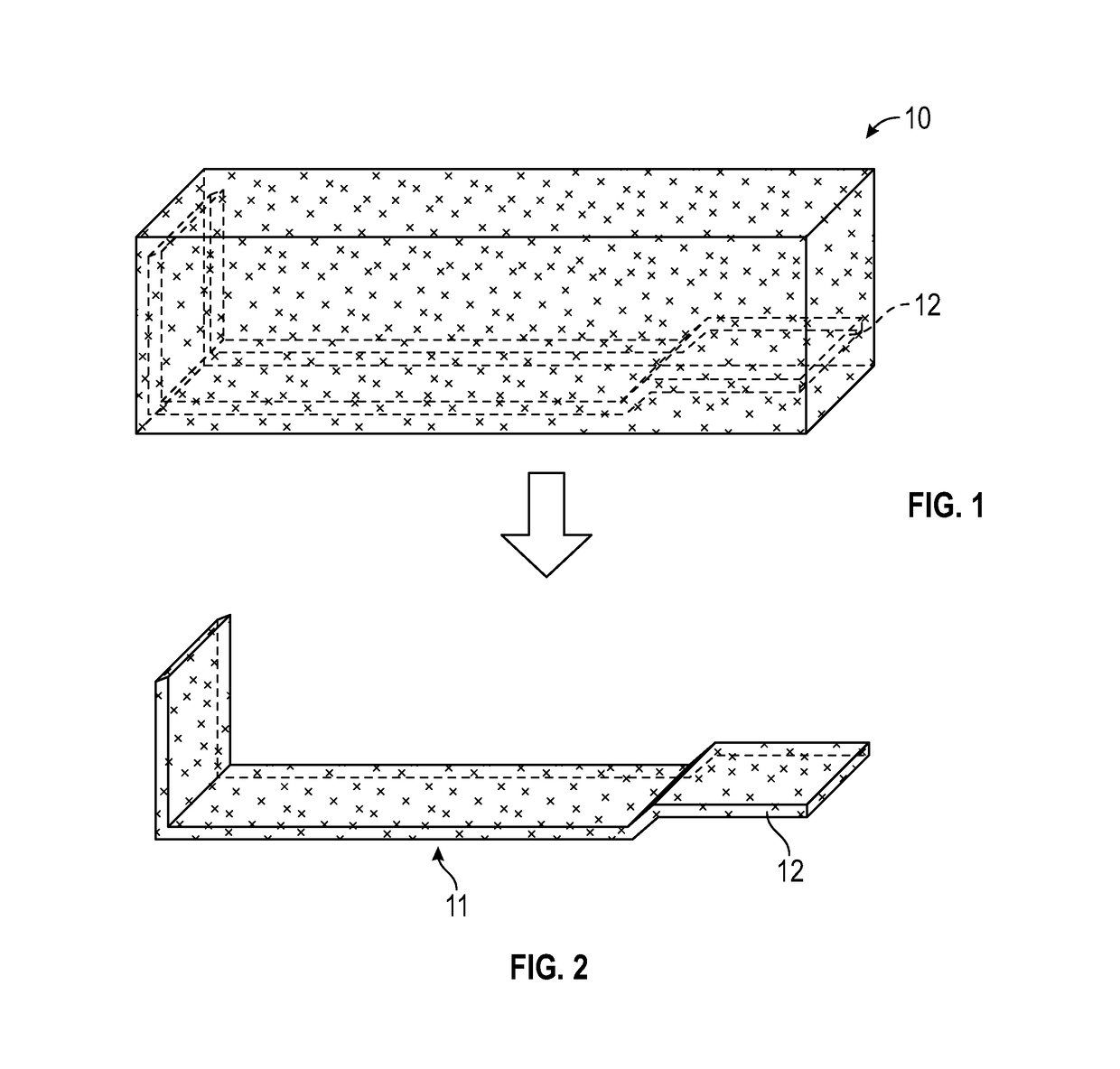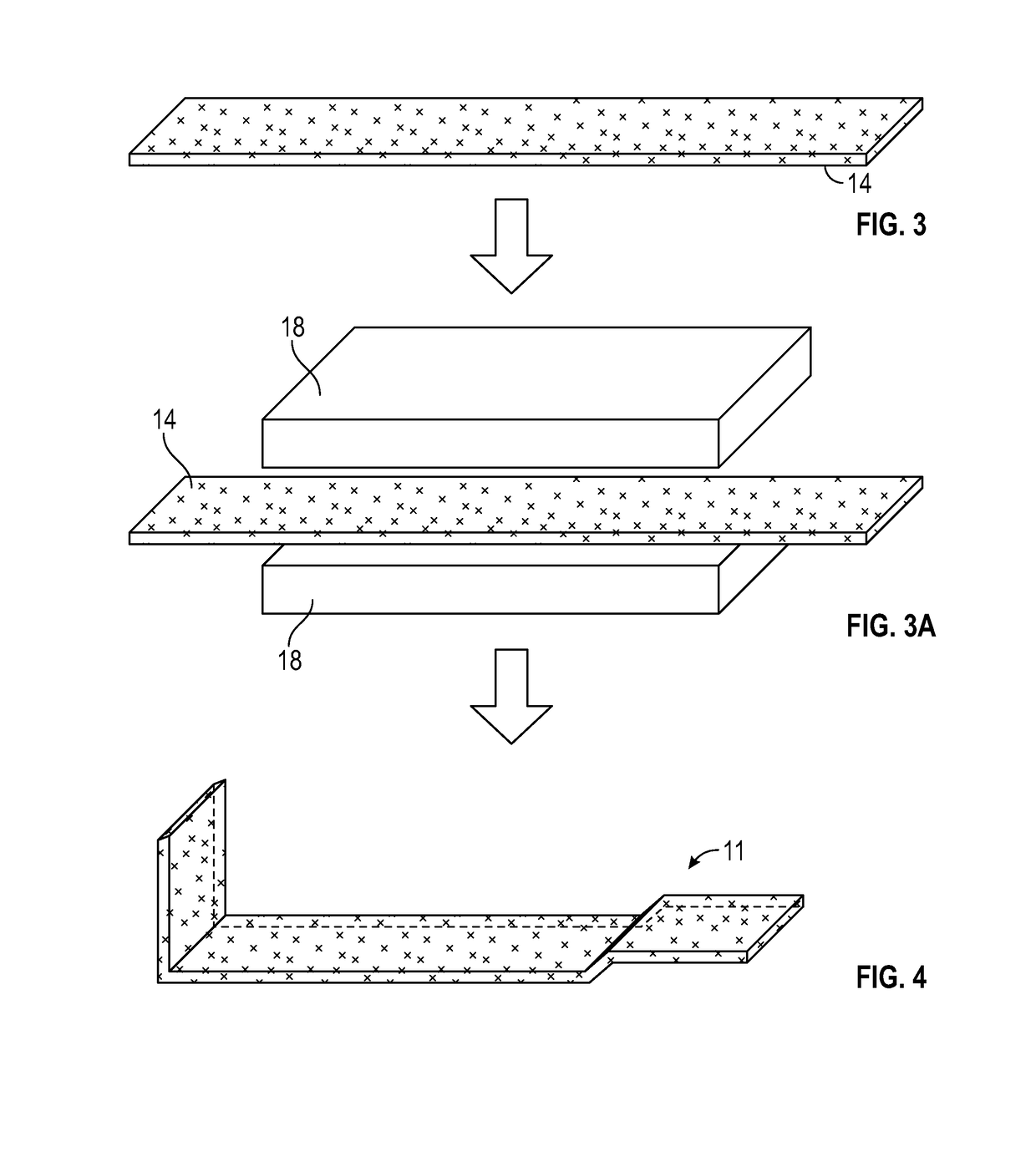Light weight housing for internal component and method of making
a technology of internal components and housings, applied in the direction of machines/engines, chemical vapor deposition coatings, metallic material coating processes, etc., can solve the problems of time to manufacture, cost of other desirable factors such as component weight, and cost to manufactur
- Summary
- Abstract
- Description
- Claims
- Application Information
AI Technical Summary
Benefits of technology
Problems solved by technology
Method used
Image
Examples
Embodiment Construction
[0040]Various embodiments of the present disclosure are related to methods of making low cost, light weight components and components formed by the aforementioned methods. In particular, the present application is directed to a component having an internal foam core, which in one embodiment may be a metallic foam core or alternatively a non-metallic foam core such as a ceramic foam core or any other non-metallic foam core and an external metallic shell surrounding the metallic or non-metallic foam core and methods for making such a component.
[0041]The present disclosure is directed to a method of making a component using a combination of subtractive and additive manufacturing processes. In general, the method starts with a metallic foam core using alloy and foam density that is compatible with a specific design application. As mentioned above and in alternative embodiments, the foam core may be non-metallic. The metallic foam core is then machined or formed to a shaped pre-form for ...
PUM
| Property | Measurement | Unit |
|---|---|---|
| porosity | aaaaa | aaaaa |
| thickness | aaaaa | aaaaa |
| thickness | aaaaa | aaaaa |
Abstract
Description
Claims
Application Information
 Login to View More
Login to View More - R&D
- Intellectual Property
- Life Sciences
- Materials
- Tech Scout
- Unparalleled Data Quality
- Higher Quality Content
- 60% Fewer Hallucinations
Browse by: Latest US Patents, China's latest patents, Technical Efficacy Thesaurus, Application Domain, Technology Topic, Popular Technical Reports.
© 2025 PatSnap. All rights reserved.Legal|Privacy policy|Modern Slavery Act Transparency Statement|Sitemap|About US| Contact US: help@patsnap.com



